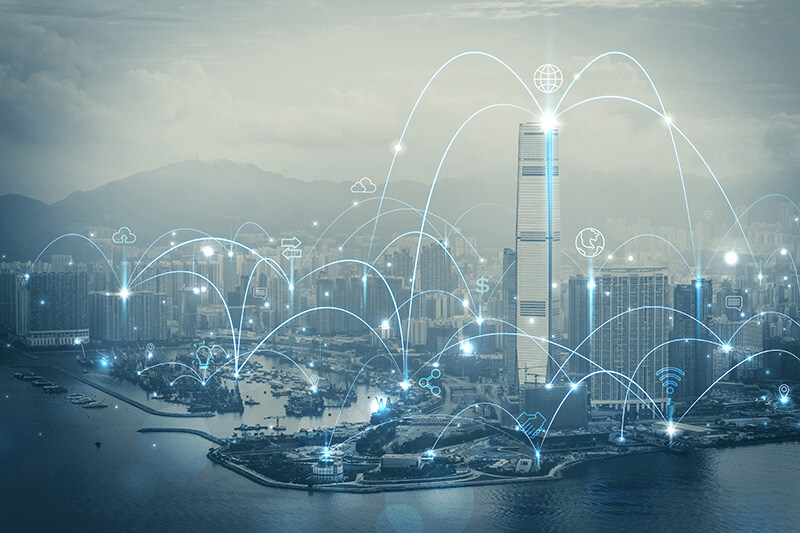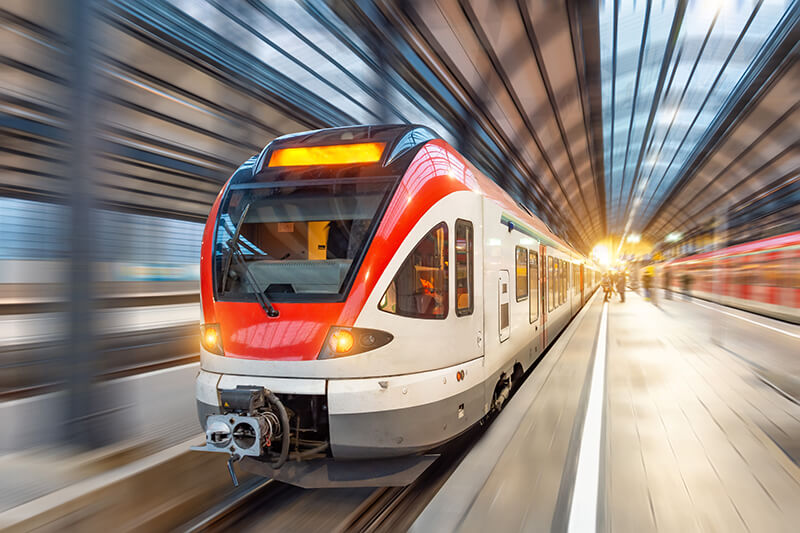Shaping the Future of Small and Medium-Sized Cities Through Digital Transformation
Adopting modern technologies in smart city transformation can improve economic competitiveness, quality of life and sustainability

Urban cities are where the nexus of people, places and economies occur. Often chosen for locations convenient for trade, cities have expanded over time as they attract workers in search of opportunity and better lives for their families. But whilst the major cities like New York and Tokyo draw the most attention, there is an understated yet significant role that small and medium-sized cities (SMCs) have in the advanced world.
.png)
 (1).png)
.png)
Digital technology, namely information, communication and technology or ICT, can potentially change the paradigm for SMCs. The advantages of ICT to enable smart cities have long been espoused, namely efficiency, better use of both public and private resources, responsiveness to changes, a better understanding of user needs and improvements in social innovation.
Based on a study by the World Economic Forum on SMCs in China, Japan, Brazil and Singapore, key obstacles have been identified: the small size of government digital teams, limited financial resources, insufficient education and skills and the lack of digital talent. Furthermore, intra- and intercity interoperability issues in services are also a concern. McKinsey consultants liken digital transformation success rate to as low as 30%.
But notwithstanding these challenges, SMCs can still harvest the benefits of ICT, where digital has a pivotal function in making SMCs smart and sustainable. The United for Smart Sustainable Cities initiative (U4SSC), coordinated by the International Telecommunication Union and UN-Habitat, helps support the development of institutional policies and strategies to encourage the use of ICT to facilitate digital transformation and ease the transition to smart, sustainable cities. U4SSC provides a list of 90 city-specific key performance indicators and practical solutions to improve the data collection process:
- Using Intelligent Transport Systems that reduce congestion and the provision smart access to public transport like online bus route schedules, train times, and micro-transit systems (bike sharing and transit on demand) makes mobility accessible and less time-consuming.
- Many SMCs have an interface with rural areas. They hence use the blue-green design (e.g. porous paving, bioswales and open spaces) and conserving spaces for natural habitats to encourage native flora and fauna species. In addition, digital mapping of villages, heritage sites, rural settlements and nature-based landmarks allows access for citizens and promotes liveability.
- Infrastructure can benefit from ICT. For example, water systems and distribution networks can be optimised and integrated with AI sensors to detect leaks and minimise non-revenue water. Using standard utility tunnels where pipes and cables are housed in well-laid-out ducts rather than in random trenches can also assist in deploying ICT to manage utility systems better.
- Many cities have committed themselves to achieving net zero carbon emissions. SMCs do not have the same advantages of economies of scale possessed by larger cities; nonetheless, they can reduce their carbon footprint through renewable energy such as solar and wind power, together with energy recovery and efficiency. Ultimately, these systems can be aligned through a smart grid which balances energy demand and supply amongst transport and building users and uses energy storage arrangements.

One must first equip the SMCs with human-centric facilities to transform them into a smart city.
There are many other applications of ICT that can lead to the digital transformation of SMCs. But the point is that digital technology is more than just improving efficiency. Like larger cities, SMCs must build resilience to short-term and long-term disasters.
COVID 19 is a good example of a disaster that struck and overpowered the world’s health resources in a short space of time. Responding to a pandemic is incumbent on any city, let alone SMCs, to protect citizens and ensure continuity. But SMCs hold certain advantages in terms of having less complex governance systems, faster decision-making processes and response times to cope with the virus spread. As a result, recovery should hopefully be quicker as well.
Digital systems can be used in preparing for and responding to such disasters. For instance, cities facing climate disasters like severe typhoons and hurricanes, flooding and bush fires can utilise digital modelling to forecast weather changes and adapt infrastructure and other defence systems accordingly. For SMCs, building this type of resilience – whether dealing with disease or climate change - can be accomplished through robust digital and ICT systems, but this often depends on the investment from city budgets.
In digital transformation, we must bear in mind the question of social equity. Too often, digital projects are designed to favour specific communities and can exacerbate the digital divide between the groups that do not have ICT access. As SMCs evolve and grow, opportunities might affect marginalised groups in terms of quality of housing, jobs, neighbourhoods, community services, utilities, and more. Digital transformation should offer many opportunities for societies, and ensuring everyone has the means and digital literacy to access them is important.
It is necessary that, as part of the transformation, there must be equitable distribution of outcomes to alleviate economic and social distress so that positive legacies are in place for future generations.
About the Author

Dr. Thomas Tang, CEO of PJ Sustainability Consulting Limited is a professional advisor to corporates on sustainability, climate resilience, urban design and social innovation. He is a UN Scholar, an adjunct professor and an author.


.png)
 (1).png)
.png)


